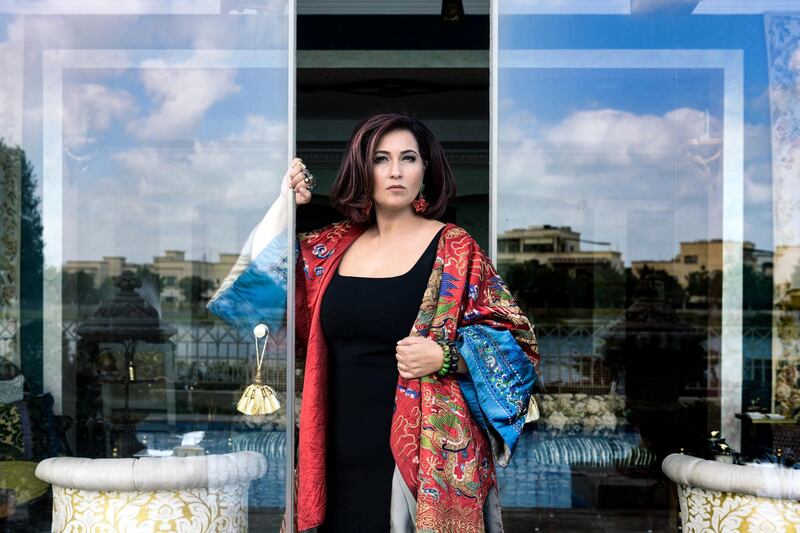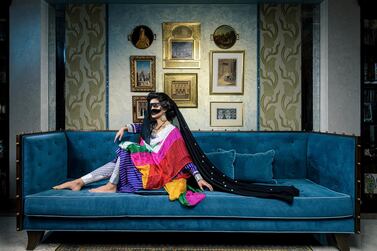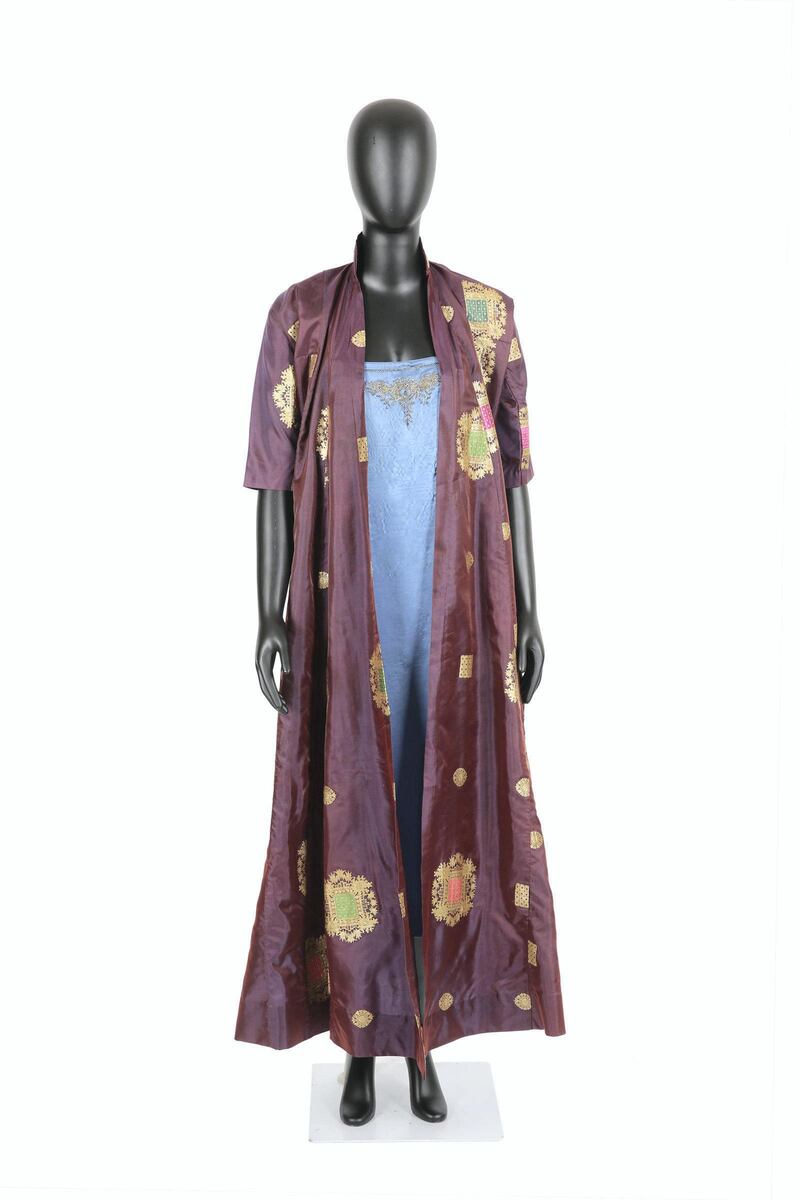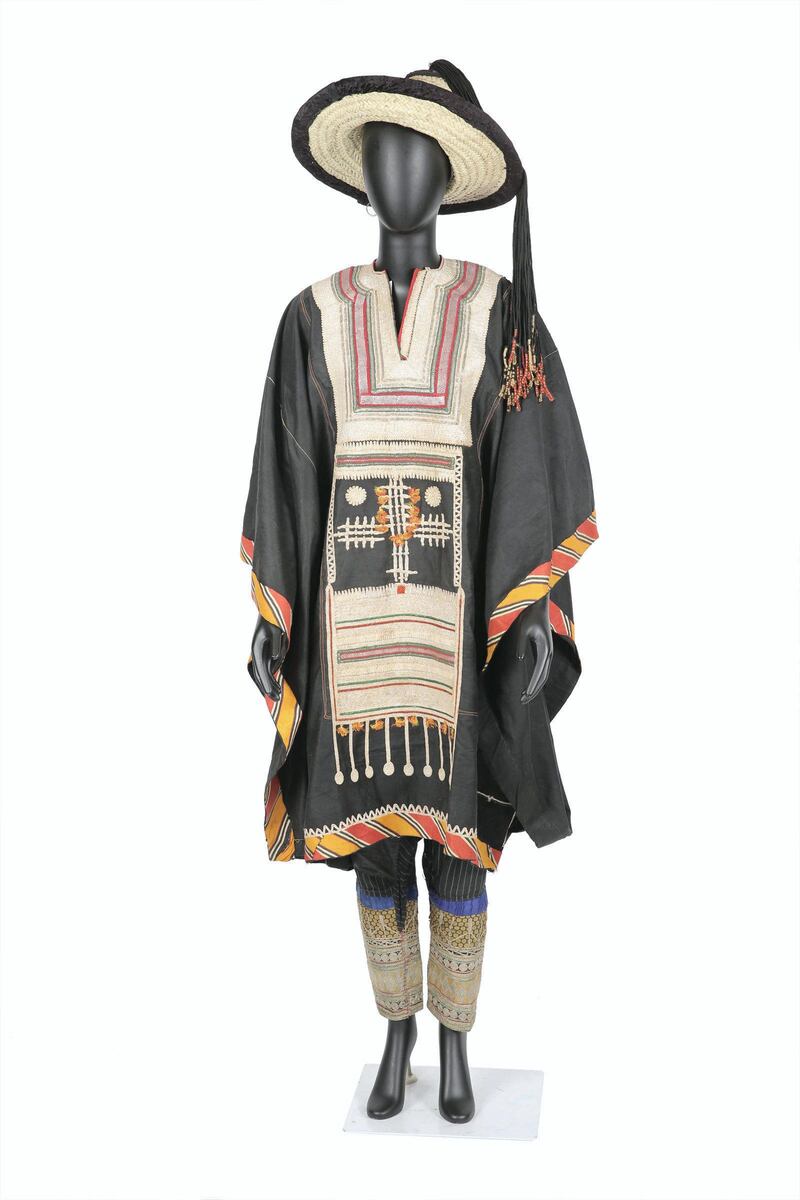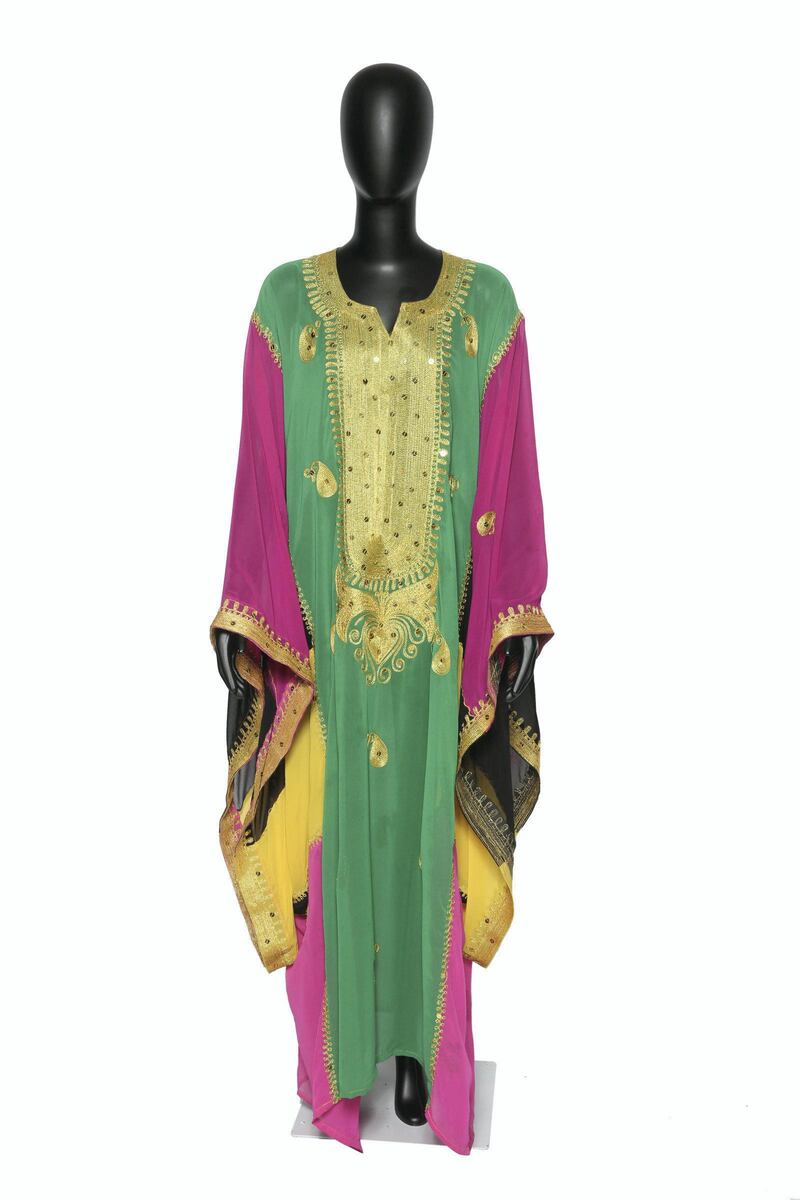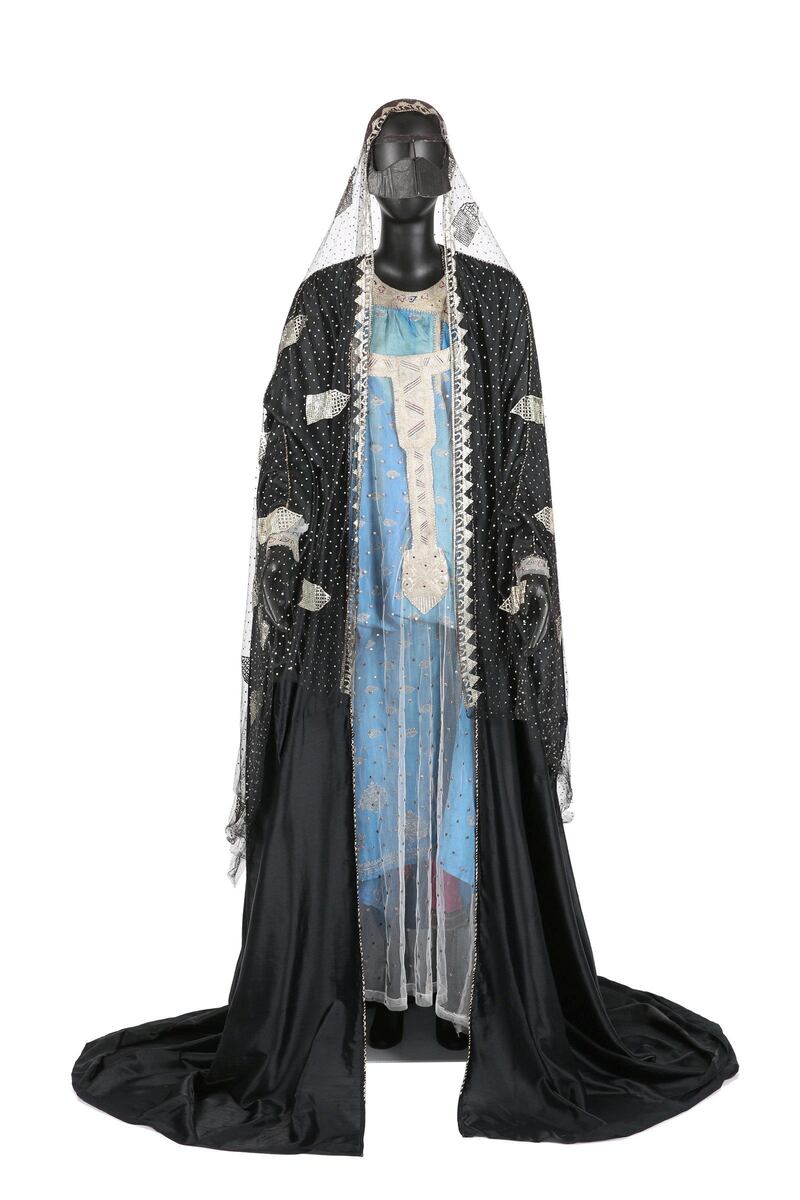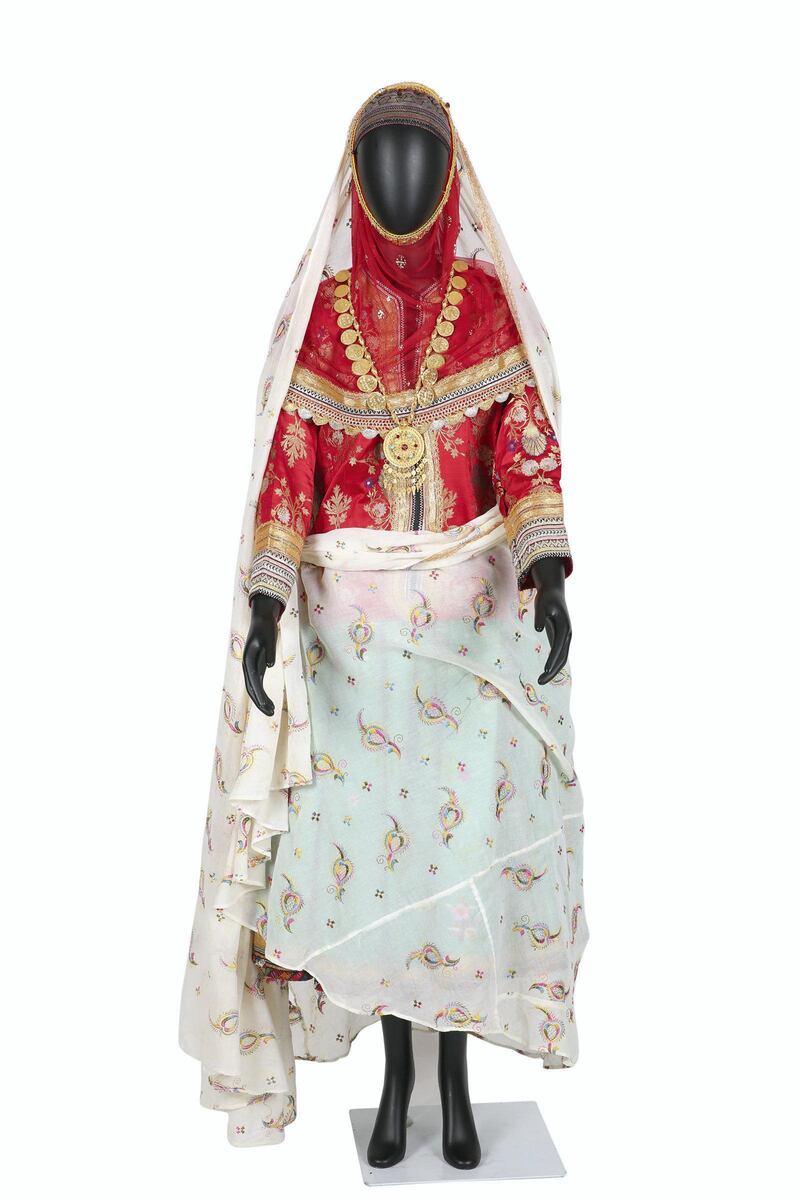Dr Reem El Mutwalli has opened a window into the colourful world of Arab dress. Her newly launched digital archive will eventually grow to become a fully fledged virtual museum, with more than 800 traditional garments from across the UAE and the wider Middle East.
This is the first go-to scholarly resource of its kind to properly catalogue articles of clothing from the region in such numbers and is a huge undertaking. Under the banner of the non-profit Zay Initiative – Zay is an Arabic term for the art of dress, costume and general attire of a certain country or era – it will ultimately provide students of fashion, designers, historians and general enthusiasts with a free guide to the background and evolution of the pieces that make up this unique collection.
El Mutwalli, who is working in collaboration with other collectors, as well as experts, holds a doctorate in Islamic art and architecture and her career spans the worlds of interior design, art and architectural curation. She has also written several books, including Sultani, Traditions Renewed: Changes in Women's Traditional Dress in the UAE.
Her latest project is very much the culmination of her life's work, but El Mutwalli continues to add to the collection. It will likely be considered "a work in progress" for some time, as it will take months of work to complete the process of curating, preserving, photographing and cataloguing the existing archive in both Arabic and English. Ultimately, the online collection will feature examples of dress sourced from the UAE, Yemen, Bahrain, Syria, Kuwait, Tunisia, Morocco, Qatar, Oman, Saudi Arabia, Iraq, Egypt, Libya, Palestine, Sudan and Lebanon, among others. Where the owner of the piece is known, names and stories of these men or women are recorded alongside a description of the clothing.
The range and depth of the material available for public view is unprecedented. To date, only limited access to a small number of pieces from this large collection has been possible at special events. The digital collection will allow the garments to be seen by a much larger audience and offers more longevity than could ever have been achieved by a physical collection.
"When we see traditional costume, we do not only see its beauty, we also recognise the area it belongs to," El Mutwalli says.
Her own collection has been amassed over many years; several pieces are gifts from some of the UAE's leading families, some have been acquired at auctions or markets across the world and others are donations. At a recent auction, the determined academic went head-to-head with the costumiers of the Downton Abbey film over an embroidered Oriental piece (El Mutwalli won, although she would not disclose her final bid).
Fashion and clothes are an expression of a society's character, history, culture and attitudes and so become infused with the story of its people at any moment in time. Yet El Mutwalli has found there is little scholarly work published in this area, nor much written about this aspect of Middle Eastern history. She says she thinks the tradition of oral history and storytelling in the region plays a part in this and so believes it is important to establish this reference and ensure that the true historical background of these intricately crafted pieces is accurately recorded and preserved.
“Dress is so multilayered and complicated and these variations can confuse, if they are not noted,” she explains. “People are beginning to forget what these items are, how they were used and who wore them.”
For example, there was a side opening that is found on local dress that has now disappeared and it has become simply a decorative element on the neckline. "Young girls today won't know why it exists there," El Mutwalli says. Much of the information on Arab dress currently available online is often inaccurate and has not always been properly researched, she says, allowing disinformation to proliferate.
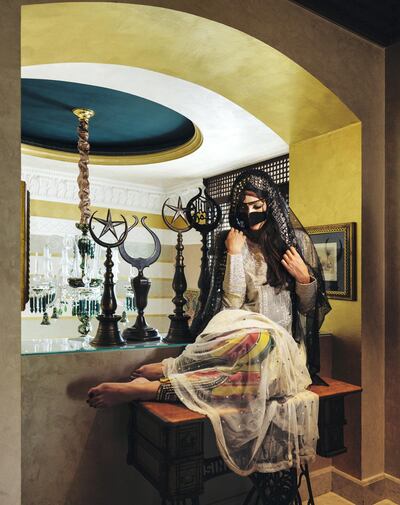
“There are all these little meanings and, if you don’t go and research and have them written down, they are going to go away without understanding where they came from.”
Another example is Sikat Al Sojar, a traditional Emirati fabric that is a multicoloured, longitudinally striped silk, brocaded with a round coin-like floral motif, reflective of currency. Its name, Sojar, is drawn from the word "soldier" and its pattern of lines reflects a typical military formation. "You could link the history of mankind through all of this," El Mutwalli says.
As traders travelled along the Silk Road, they took visual references from the Islamic world, from as far as Scotland, where the twisted teardrop pattern was incorporated into the weavers' designs for shawls during the 17th century and became known as the Paisley pattern, after the town where they were made.
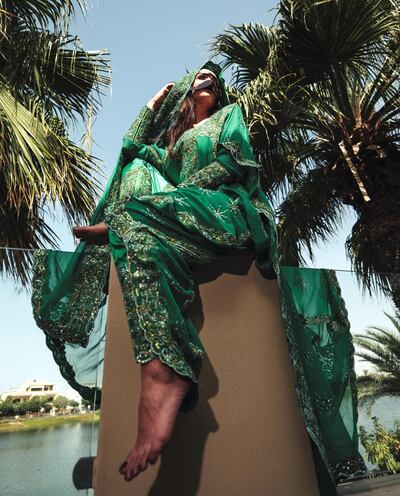
When she conceived the idea for the initiative, El Mutwalli looked for an advisory committee and drew on her long career to bring together other collectors and experts in the field, many of whom were also lifelong friends. This includes Dr Gillian Vogelsang, a professional textile and dress historian who has many years of experience working as a textile archaeologist in the Middle East; Dr Layla Al Bassam, who is the first Saudi woman to study traditional Saudi costume and textiles.
Widad Kamel Kawar, owner of Tiraz: Widad Kawar Home for Arab Dress in Jordan, Shahira Mahrez, who has been collecting and archiving Egyptian peasant dresses since she was a teenager and Hana Sadiq, a fashion designer who specialises in the integration of Arab art within haute couture, were also contacted. There are several volunteers working to support the initiative in other ways, too, through writing and translation, but El Mutwalli is always looking for more collaborators.
Unsurprisingly, the work of the Zay Initiative has caught the attention of several international institutions and the London College of Fashion has invited El Mutwalli to give a talk and they have discussed offering students the opportunity to use the collection as a basis for their research at master's and doctorate level. "People are beginning to take notice of what we do," she says. "This is just the beginning."
As we move towards Expo 2020 Dubai, the UAE is gearing up to proudly display its future. Quietly, in the background, El Mutwalli and her team are working hard to ensure the region's past is preserved for generations to come.
The Zay Initiative’s blog provides the gateway to the archive where articles can be searched for by garment, decade and country via www.thezay.org/theblog/shop
